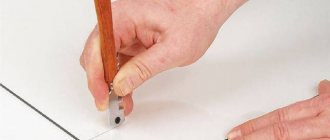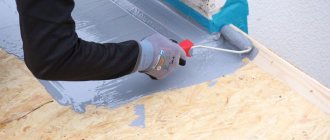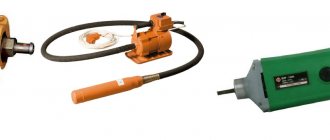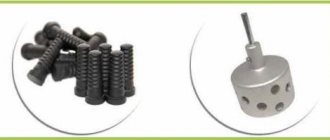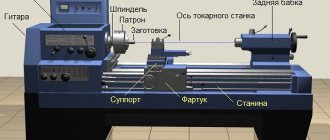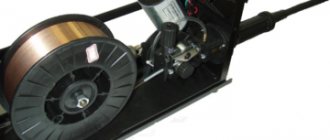Practical use
A hoe is a multifunctional classic garden tool. Schematically it consists of a long handle and a working part - a metal cutting blade located at right angles to the holder.
The long handle allows you to lower the working part deeply into the ground without much effort - due to the lever effect. There is no need to bend over or squat while cultivating the soil.
Tip: to make the job as easy as possible, the cutting edge needs to be sharpened periodically. With a sharp working edge, even a light hoe easily sinks into the soil, allowing you to completely remove weed roots.
Scope of application:
- hilling up plantings;
- loosening the soil;
- cutting and removing weeds;
- leveling lawn edges;
- cutting rows for sowing;
- application of fertilizers.
Even heavy-duty tools are not designed for breaking ice or working in dry, hard soil. The edge will quickly become dull and the blade will crack.
Purpose
A hoe is one of the main gardening tools, which is used to control weeds and loosen the soil. Using a hoe, you can weed the beds, remove weeds and unnecessary roots.
This equipment is also used to form depressions and grooves in the soil for planting seeds, for hilling plants, in particular potatoes, which leads to increased growth.
Modern modifications of this tool have an electric motor, which makes it possible to perform aeration and harrowing (harrowing) of the soil.
Different types of hoes are used in the garden, in flower beds of any size, and on a regular lawn, where they are used to prepare the top layer of the planting area, trim the edges, and remove weeds.
Types of hoes
The working blade of a classic universal hoe is made in the shape of a trapezoid, the wide edge of which is the cutting edge.
To make soil cultivation easier, you can use several more types of tools:
- hoe - a semicircular cutting edge (in the form of a halberd);
- drop-shaped, wedge-shaped working blades, well suited for harrowing or processing dense soils;
- Dutch - with a hole in the canvas;
- weeder - in the form of a pitchfork. The roots of the weeds are not cut, they turn outward.
To break up clods of earth, it is convenient to use a “dragon” type hoe, which instead of a blade has a powerful trident surrounded by a pointed bracket.
For loosening and weeding, some summer residents use electric hoes (rotary). They are convenient for weeding soft soil, picking moss from the lawn, and mixing fertilizers.
Description of design
Hoes are an indispensable tool for creating irrigation furrows before watering with your own hands, rather than with automatic watering. An indispensable tool for hilling plants, since with the help of a long handle you can loosen the most remote areas. A summer resident's kit always consists of several types of gardening tools, for example, a hoe and its hybrid (hoe, ripper), both factory-made and assembled with your own hands.
Garden hoes are made in different variations, which allows you to easily do a wide variety of work on a good site. Depending on the required work, choose a hoe with different blade widths, with pointed or rounded corners, trapezoidal or triangle shaped.
The material from which a hoe is often made is carbon steel. This material is easy to sharpen with your own hands, but it is most susceptible to corrosion. To ensure that such a tool serves you as long as possible, after each work in the garden, thoroughly clean any remaining soil and grass from the blade, and then lubricate it with oil. Stainless steel hoes are more popular among summer residents, since stainless steel is more durable and requires simple maintenance. The only negative is the price.
A hoe is the same as a chopper, only its blade is made in the form of a hemisphere with a pointed end. This type is more suitable for hilling, creating holes for planting, as well as beds for potatoes, vegetables, and legumes on rocky soils.
The difference between the hoe-ripper hybrid and the classic type is the presence of non-curved ends, with which you can easily weed out weeds from creeping plants.
What is the difference between a hoe and a hoe and a flat cutter?
Gardeners usually call a hoe a small hoe with a short handle, which can be used to process beds with dense plantings or young plants. The hoe is designed for large areas and crops that do not require delicate handling of the roots.
A special type of garden tool is a flat cutter. The most popular is the Fokine model. It differs from a hoe and a hoe in the shape of the working part - it is made in the form of a poker or hook with sharpened edges. The task of the flat cutter is to cut off the above-ground part of the weeds, leaving the roots in the ground to rot.
Blade shape and angle
The blade of the tool, depending on the specific product, has different parameters.
To process row spacing, wide, massive blades are used, the shape of which can be used to distinguish the following types of hoes:
- Rectangular - with a blade in the form of a clear narrow rectangle, sharpened on one side.
- Trapezoid - with a trapezoid-shaped blade, where the widest side forms the cutting edge.
- Trapezoid - with a trapezoid-shaped blade, where the widest side forms the cutting edge.
- Triangular - with a blade in the form of an isosceles triangle, where equal sides are sharpened and meet at an obtuse angle if we are talking about a full-size tool, and at a sharp angle if we are talking about miniature models of hoes. In the latter case, the shape of the working part resembles a heart if all the corners are rounded.
On the opposite side there may be a trident or a bident, as in the picture above. - Arc-shaped - with a cutting part in the form of a circle segment. This shape is well suited for forming holes and wide furrows in the soil for seeds. The variety is crescent shaped. The blade is a flat blade and the tool is classified as a straight hoe, but this is not always the case.
On the opposite side there may be a trident or a bident, as in the picture above. - Arc-shaped - with a cutting part in the form of a circle segment. This shape is well suited for forming holes and wide furrows in the soil for seeds. The variety is crescent shaped. The blade is a flat blade and the tool is classified as a straight hoe, but this is not always the case. In some models, the blade has a smooth transverse bend, which is why they are called radius, and the shape of the cutting edge can be any.
The angle of inclination of the blade in relation to the handle is usually 70 - 90 degrees. The blade itself is rigidly fixed, however, there are removable options.
Miracle hoe for easy weeding
Neumann's Miracle Hoe is a relatively recent invention. The working part is made in the form of two springy metal rods, between which a string is stretched (performs the function of a cutting edge). It is fixed in the locking grooves.
Video about what Neumann's Miracle Hoe is and how to work.
The tool is convenient because it allows you to vary the width of the working part. To do this, the string is removed from the grooves, the spring rods are brought together or opened to the required distance, and a new string of suitable size is inserted into the locking grooves. This tool is not suitable for dense soil. The string will have to be changed frequently, the quality of the soil treatment will be worse.
Design, characteristics and principle of operation
The design of the hoe allows you to perform work at some distance from the person operating it, thereby eliminating the need to stomp around the area being processed.
The tool consists of a handle (holder, handle), to which a blade is attached at an angle.
The shape of the working part and the overall dimensions greatly depend on the purpose of this equipment.
During operation, the blade is buried in the soil with a “downwards and towards itself” movement, thereby cutting the weed stem at the root or even at the root.
How to make a hoe with your own hands
Making your own hoe makes sense when the farm has old tools or parts thereof, such as bayonet shovels, blades for circular and two-handed regular saws, and cuttings.
How to make a durable hoe from a shovel:
Required materials and equipment:
- bayonet shovel blade;
- varnish;
- wooden stalk;
- Bulgarian;
- bolts;
- drill;
- a piece of metal pipe (metal thickness 2-3 mm);
- nails.
- Using a grinder, evenly cut off about a third of the blade from the bottom and sand the edges. This will be the working part with a cutting wedge-shaped edge.
- Flatten (beat) one end of the pipe, bend it into the letter “G”, stepping back 5 cm from the edge. This will be the holder of the working part.
- Drill 2 holes in the holder and in the upper edge of the canvas so that when placed on top of each other they coincide.
- Align, secure with bolts or rivets.
- Sharpen the handle and hammer it into the free end of the pipe, drill a hole and secure it with nails.
- The wooden part can be varnished.
A spade hoe will last a long time. It processes the soil efficiently due to the wedge-shaped working part.
Saw hoe
For manufacturing you will need a welding machine. With an inverter, welding is performed with the following parameters: current 65A, electrode 3 mm (since the saw blade is thin).
Work progress:
- Using a grinder, cut out a central part approximately 25 cm wide from a two-handed saw blade - this will be the cutting edge.
- bend metal reinforcement rods about 40-50 cm long into a rounded corner.
- Weld each end to the edge of the saw blade (across the entire width), and the other to the end of a piece of metal pipe (diameter slightly smaller than the handle of a shovel) - the working part is ready.
- Grind the handle, place the working part on it and secure it with clamps or self-tapping screws.
- The teeth can be sharpened a little.
The result is a lightweight hoe that can easily last 2-3 seasons, coping well with small weeds.
Dimensions of parts and materials of manufacture
The parts of the hoe are rigidly fixed, but there are also collapsible models. The handle is made of wood, metal or plastic. To increase reliability, many manufacturers make the handle from reinforced plastic and provide it with a rubber coating.
If we talk about the tip, it is made only from metal. Carbon, tool or stainless steel is mainly used.
The length of the cutting varies from 100 to 1200 mm. It should be noted that the longer the handle, the less load on the back area during operation. The length of the shovel can be from 60 to 300 mm, the height of the cutting plate is about 20 mm.
How to sharpen a hoe
The hoe is sharpened on one side - the outer part (from itself) is processed, which goes into the ground. The sharpening angle is approximately 30-40˚. As a tool, you can use a grinder, a file, or an electric chisel.
In most households, the only sharpening tools available are whetstone (grindstone). To process the cutting edge you will need fine- and coarse-grained. Both types of surfaces are usually present on different sides of the block. First, the edge is processed with a coarse-grained edge (the direction when sharpening is towards the bottom edge), then it is sanded with a fine grain (the direction is from the edge to the base).
It is more convenient to work with a hoe with sharp lower corners. To keep them that way longer, you can chip away at the areas around them and then adjust the cutting edge line. This tool easily breaks even thick roots.
Successful homemade hoes can be more convenient and durable than store-bought ones. The shape of the working canvas is limited only by the imagination of the master and the arsenal of available materials.
Technical features
If we talk about the technical characteristics of a country tool, then, in fact, a hoe is a small metal shield, which is attached at an angle of 90 degrees to a long wooden handle. The shield is made in the following shapes:
- rectangular;
- triangular;
- trapezoidal.
When purchasing, choose the type that is most suitable for the work ahead. Pay attention to the material used to make the metal blade, as this is what determines the quality of the purchased tool. Often, farms need hoees and shovels of different lengths and shapes for hilling, forming beds and removing weeds.
What it is?
Since ancient times, people have used various tools to cultivate the land. The change and improvement of the instrument was very slow. The equipment was very heavy, cumbersome and sometimes only complicated the process of cultivating the land. The question of inventing a more advanced tool for cultivating the land was brewing. So that it quickly helps to cope with the work, is quite comfortable and not heavy. Then the hoe was invented, which was one of the first devices for cultivating the soil. It looked very interesting and was a long stick with a knife sharpened at the end, and instead of stone, mammoth tusks, shells or the horns of large animals could be used.
Currently, a garden or country hoe looks very standard. This is a convenient tool because you can work on all 3 sides. While in the soil, the tool processes the top layer and also creates grooves. These grooves are then very necessary for sowing. High-quality metal must have a special sharpening. During operation, self-sharpening is carried out. Thanks to its light weight, it can cut through dense thickets without disturbing the soil.
Important! The design principle of this hand tool was used to design the cultivator.
Every expert knows that a triangular-shaped universal tool is ideal for cultivating the ground. This model has sharp corners, making it very easy to make grooves in the form of a “tick”. For the lawn, you should use a hoe with a thin blade. Comfort when using the tool depends on the angle of inclination. To remove grass, it is also necessary to perform all actions at a certain angle. Many gardeners like to use a hoe with a curved, concave blade. Before purchasing a tool, you need to choose for what purposes it will be used.
Conclusion
A knife is an important kitchen utensil that is used in daily life. In order not to suffer from cutting food, it is better to sharpen the blade once again. Listen to the advice and you will succeed.
Previous
Kitchen knivesHow to open an oyster at home: use an oyster knife
Next
KnivesKnife with holes on the blade: what is it used for
Sharpening methods
The blade can be sharpened using the following methods:
- Musata. Used for sharpening tools for everyday use. In its structure it resembles a ratfil.
- Mechanical machines that have special recesses into which a knife is inserted. The blade can be sharpened using physical force.
- Electric machines that choose the angle of inclination themselves and sharpen a blade of any strength.
- Bulgarian . This method is for those who like to work with their hands.
Small subtleties
Before starting such labor-intensive tasks as weeding, hilling or weed control, it is very important to get the setup correctly and also sharpen the tool well. A sharp hoe makes work easier, uses less energy and eliminates calluses
A sharpened hoe has an angle of 45 degrees on its working surface. This procedure should be carried out systematically, otherwise working with the soil will bring you a lot of trouble and turn into hard labor.
When choosing a tool, you should give preference to a lightweight, multifunctional hoe
Pay special attention to the cuttings. It is better to refuse a hoe with an all-metal handle
Although it is very durable, it is very difficult and inconvenient to handle. Such a tool is suitable for people who are not deprived of strength, and only for certain land work.
If you want to spend a minimum of energy, choose the latest invention - an electric hoe-ripper. It performs basic earthworks and does not require additional effort. Its only drawback is its very high price.
7 Body Parts You Shouldn't Touch with Your Hands Think of your body as a temple: you can use it, but there are some sacred places that you shouldn't touch with your hands. Research showing.
15 Cancer Symptoms Women Most Often Ignore Many signs of cancer are similar to symptoms of other diseases or conditions, which is why they are often ignored.
Pay attention to your body. If you notice
20 photos of cats taken at the right moment Cats are amazing creatures, and perhaps everyone knows this. They are also incredibly photogenic and always know how to be in the right place at the right time.
These 10 little things a man always notices in a woman Do you think your man doesn’t understand anything about female psychology? This is wrong. Not a single little thing can be hidden from the gaze of a partner who loves you. And here are 10 things.
11 Weird Signs That You're Good in Bed Do you also want to believe that you please your romantic partner in bed? At least you don't want to blush and apologize.
Contrary to all stereotypes: a girl with a rare genetic disorder conquers the fashion world. This girl's name is Melanie Gaydos, and she burst into the fashion world quickly, shocking, inspiring and destroying stupid stereotypes.
Hoe, hoe, hoe – even gardeners themselves sometimes don’t know what the difference is between these garden tools. Everyone, at their own discretion, calls some garden tool a hoe, or some hoe, but even among neighbors these can be completely different in shape and weight of the device. Let's understand these complexities!
Hoe, hoe, hoe – even gardeners themselves sometimes don’t know what the difference is between these garden tools. Everyone, at their own discretion, calls some garden tool a hoe, or some hoe, but even among neighbors these can be completely different in shape and weight of the device. Let's understand these complexities!
Rules for care and use
Without proper care, the working surface of the hoe will rust, will not fit into the ground well, will lose strength and eventually break.
To extend the service life, a number of rules must be followed:
- every time after work, clean the canvas or teeth from the soil using burlap or a bunch of grass;
- when storing, the working surface must be washed, lubricated, wrapped in newspaper and protected from moisture;
- Do not use the hoe for purposes other than its intended purpose: cutting roots, chopping ice.
The working surfaces of high-quality hoes have an anti-corrosion coating, but this does not eliminate the need to care for the tool.
Leveling the height of the links
If the teeth of a hacksaw have different heights, then when sawing they take the load unevenly. This increases wear on higher elements and reduces the functionality of the hacksaw, since low teeth practically do not participate in the sawing process.
It is advisable to check and correct the height of the cutting elements before sharpening the hacksaw. The easiest way to check is as follows. The saw is pressed tightly against a sheet of paper laid on a flat, smooth surface. The profile is imprinted on paper, and a visible arrangement appears, by which the sizes of the teeth can be compared. If teeth are detected with an increased height compared to others, then the saw is clamped in a vice and they are shortened using a flat file.

